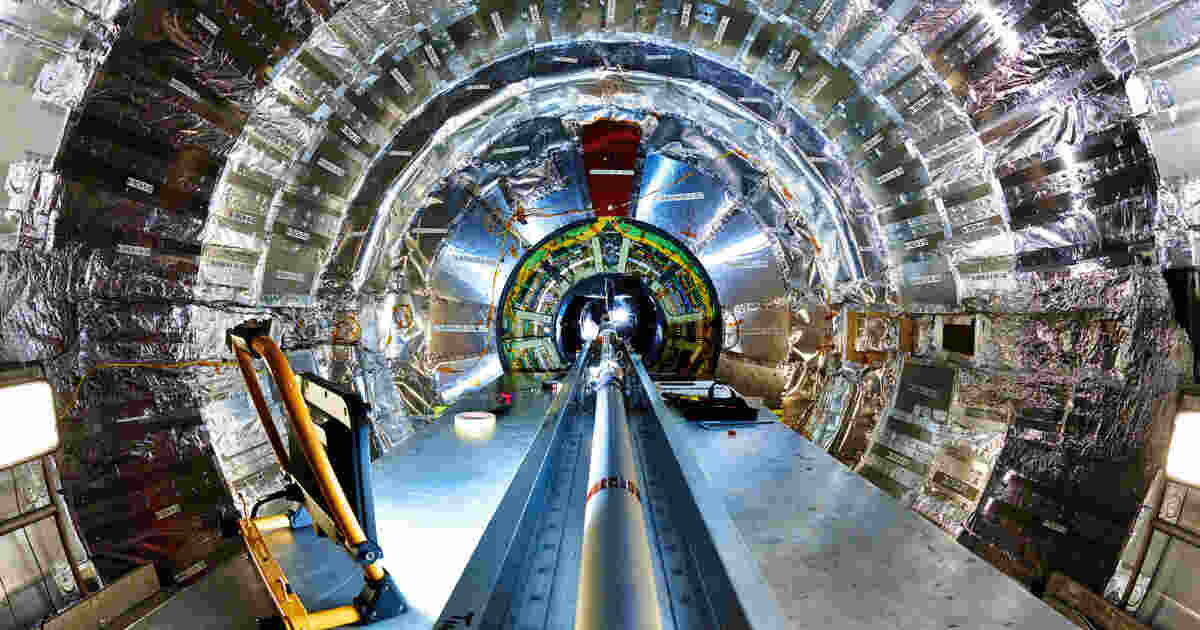THE LATEST
Rochester physicists confirm ‘spooky action at a distance’ through quantum entanglement of top quarks

A team of physicists at the University of Rochester, led by Professor Regina Demina, has recently conducted an experiment at the European Center for Nuclear Research (CERN) that has produced a significant result relating to quantum entanglement. The team has confirmed that entanglement persists between unstable top quarks and their antimatter partners at distances much farther than what can be covered by information transmitted at the speed of light. This finding is a testament to what Albert Einstein called “spooky action at a distance” and could have far-reaching implications in the field of quantum information science.
Entanglement is a coordinated behavior of minuscule particles that occurs when they interact and then move apart. Even when separated, the measurement of a single particle’s properties, such as position, momentum, or spin, instantaneously affects the results of the other particle, thus making their states seemingly inseparable. Until now, quantum entanglement has been observed only between stable particles, such as electrons and photons. This study has broken new ground by observing the phenomenon between unstable particles called top quarks.
The finding, reported by the Compact Muon Solenoid (CMS) Collaboration, confirmed quantum entanglement between the heaviest fundamental particles – top quarks. The researchers’ findings have opened up a new avenue for exploration of the quantum nature of the world at energies beyond what is currently accessible. CERN, based near Geneva, Switzerland, enabled this breakthrough through the Large Hadron Collider (LHC), which facilitates research by discharging high-energy particles around a 17-mile underground track at speeds approaching that of light.
While entanglement forms the foundation of quantum information science, the discovery of persistent entanglement between top quarks and antimatter is unlikely to be applied to building a quantum computer. However, research like that conducted by Demina and her team sheds light on how long entanglement persists and what ultimately breaks it. This study can contribute significantly to our understanding of what led to the loss of the quantum connection in our world, and theorists believe that the universe was in an entangled state after the initial fast expansion stage.
The researchers achieved these noteworthy results by confirming the spin correlation between top quarks and their antimatter partners, thereby manifesting what Einstein called “spooky action at a distance.” The discovery has provided new insight into the persistence of quantum entanglement.
Regina Demina, the leader of the study, recorded a video for CMS' social media channels, where she explains her group’s result using an analogy of an indecisive king of a distant land referred to as “King Top.” The concept enables the viewer to understand the relationship between Anti-Top, King Top’s antiparticle, and the entangled state of their minds at any moment in time.
Demina’s research group consisted of herself, graduate student Alan Herrera, and postdoctoral fellow Otto Hindrichs. As a graduate student, Demina was part of the team that discovered the top quark in 1995 and co-led a team of scientists from across the US that designed a tracking device, playing a crucial role in the 2012 discovery of the Higgs boson.
The study positions the University of Rochester's research at the forefront of the field of particle physics. The research conducted at CERN continues to expand our understanding of the nature of the universe, with the findings contributing to the growth of the rapidly growing field of quantum information science.

